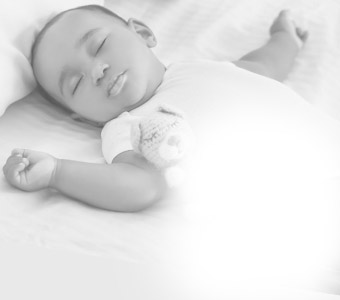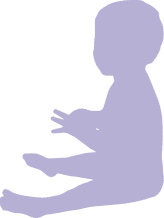Common Birth Injury Treatment Methods
Birth injuries come in many different forms and conditions, so they can vary in severity. Proper diagnosis and treatment can help children manage their health issues and live a happy life.
Risk factors such as oxygen deprivation (asphyxia), umbilical cord issues, breech position in the womb, use of forceps or vacuum extraction, and other situations can make birth injuries more likely.
The most important factor in treating a birth trauma is time. If an injury is caught early on, it can often be treated before it seriously harms the baby. If a doctor fails to catch a severe birth injury before it is too late, they could be found at fault for any long-term issues.

If an injury is caught early on,
it can often be treated before it seriously harms the baby.
Common birth injury treatments include:
- Adaptive equipment: Braces, wheelchairs, orthotics, strollers, and other equipment can help children with mobility issues
- Medication: Certain medications can help ease tight muscles and treat secondary conditions such as epilepsy and attention deficit hyperactivity disorder (ADHD)
- Occupational therapy: Children can practice their fine motor skills to get better at brushing teeth, dressing, bathing, and more
- Physical therapy: This helps children strengthen muscles, regain control over voluntary movement, and help improve mobility
- Speech therapy: Children with oral muscle issues and mental disabilities may benefit from working with a speech therapist to improve their communication skills
- Surgery: Children with severe mobility issues caused by foot, hip, leg, and/or spine problems may need surgery to correct movement problems
If you believe your child suffered from a preventable birth injury, talk to one of our registered nurses to learn about next steps.
Treatment for Each Birth Injury Type
Since there are many different types of birth injuries, there are several types of treatment methods available to manage your child’s conditions.
Each child’s injury is unique, so they will have a customized treatment plan to manage their specific symptoms.
Learn more about treatment options for each type of birth injury.
Brain Damage
The best way to treat brain damage is to get medical help as soon as possible. Babies are at a higher risk of suffering brain damage since their brains are still developing.
Brain damage can be caused by many issues, including a lack of oxygen, physical trauma, or infection of the brain. Symptoms can vary depending on the part of the brain that was damaged.
It is important to consult with your doctor about any issues you notice in your child. Trained doctors can accurately diagnose brain damage and recommend a treatment plan.
Though there may not be a cure for your child’s brain injury, treatments can help manage and ease their symptoms.
In general, brain damage treatment includes:
- Medications: Can help manage certain symptoms associated with brain injuries, such as seizures and muscle spasticity. Your child may need several different medications to manage all their symptoms.
- Surgery: May be used during the initial treatment process or to manage issues with symptoms later on. Surgery can stop bleeding within the brain and remove blood clots that could damage the brain. In some cases, it can help manage other issues like seizures.
- Therapy: Primarily focuses on the most challenging area for the affected person. Therapy options may include occupational therapy, speech therapy, physical therapy, and/or aquatic therapy, depending on the child’s needs.
Brain damage treatment methods are often used for cerebral palsy patients. Cerebral palsy is caused by irreversible brain damage.
Treatment methods focus on managing the child’s symptoms caused by damage to certain areas of the brain. Cerebral palsy treatment aims to treat physical, neurological, cognitive, and behavioral issues.
Newborn Cephalohematoma
An infant hematoma occurs when a head injury causes bleeding in the brain during the birthing process. Clots can form where there is bleeding, which may lead to increased pressure on areas of the brain.
Some hematomas may clear up on their own. That said, be sure to get prompt medical treatment if your child’s hematoma does not go away. Treatment must be sought quickly to prevent serious injury or death. Surgery is the most common way to help manage a hematoma.
Surgeries include:
- Burr Hole surgery: Doctors drill small holes in the skull to relieve the pressure caused by the blood in this procedure. Depending on the severity, a drain may be left in place for a few days post-surgery. Burr hole surgery is one of the most common treatments for less severe hematomas.
- Craniotomy: An oval-shaped piece of the skull called a bone flap is removed to allow the pressure to escape. Once the surgery is completed, the bone flap is put back. A craniotomy may be recommended if the hematoma is particularly large or has clotted into a solid mass.
- Craniectomy: This is very similar to a craniotomy in that a bone flap is removed. However, it is not put back in at the end of the surgery. Those who undergo a craniectomy have a lower chance of suffering another hematoma.
Newborn Jaundice
When newborns have jaundice, their skin is tinted yellow because they have too much of a pigment called bilirubin in their bloodstream. It is one of the most common and most treatable conditions in newborns. However, it can cause severe injury in rare cases.
According to the Mayo Clinic, most cases of newborn jaundice clear up on their own after a few weeks without treatment. However, if it does not clear up, a doctor can recommend a few different treatments.
The most common treatments include:
- Light therapy: Also known as phototherapy, it helps decrease bilirubin to safe/normal levels by breaking it down to a product that is easier to eliminate by the liver. The baby is typically placed under fluorescent lights for several hours during treatment. This light makes bilirubin easier for the baby’s body to break down. They may also wear a fiber-optic blanket or pad to make the process easier.
- Exchange transfusion: If the baby’s condition does not respond to light therapy, they may need a blood transfusion. Through an exchange transfusion, your baby’s blood will be replaced with that of a matching donor. Since the donor’s blood will not contain the excess pigment, the jaundice will clear up faster.
- Intravenous immunoglobulin (IVIg): In some cases, newborn jaundice can be caused when a mother’s blood type does not match with the baby’s. As a result, the mother’s immune system develops antibodies that attack the baby’s blood cells. Immunoglobulin is a protein that can help break down these antibodies through a transfusion.
The baby should be monitored during these treatments (particularly light therapy) for any potential issues, such as dehydration. By monitoring the baby, doctors can track their progress and take extra steps if needed.
In less severe cases, doctors may also recommend that you change how you feed your baby. They will often encourage you to feed the baby more so they can flush the excess pigments out.
Babies with jaundice might need both breast milk and formula to help them stay hydrated and healthy. This can be hard for moms who want only to breastfeed, but it’s really important for their baby’s health. Even if things change a bit at first, it’s all about keeping the baby well.
Untreated newborn jaundice can lead to kernicterus, which happens when the bilirubin that causes jaundice builds up to dangerous levels. Too much bilirubin can cause permanent brain damage.
Kernicterus is a medical emergency. However, if treatment starts early on, some of the brain damage could be avoided. The main treatment for kernicterus includes phototherapy and a blood transfusion.
Spinal Cord Injuries
Most spinal cord injuries that occur at birth typically affect the neck area. If a child may have suffered a spinal cord injury, they must get medical attention immediately.
Depending on the extent of the damage, the injury may not ever heal completely as there is no cure for spinal cord injuries. However, different treatments can improve your child’s quality of life.
Treatments for spinal cord injuries include:
- Adaptive equipment: May be needed if the injury affects the child’s movement and they cannot move their legs properly. Crutches, wheelchairs, and similar devices can be used. In more extreme cases, children may need breathing support or a catheter to control their bowel movements.
- Medications: Can manage pain and control swelling of the spine. Certain medications can also help with unique issues like spasticity and lack of bladder control.
- Surgery: Can help stabilize the affected area, preserve its functions, and lessen the risk of further progression. It is not necessary in all cases, but it can be helpful.
- Therapy: Can help strengthen children’s muscles and allow them to find ways to move despite their injury. Parents and therapists can work with the child to keep their body healthy.
Erb’s palsy is a condition that may be caused by a spinal cord injury when the brachial plexus network of nerves are torn from the spine when the child is exiting the birth canal.
Although many cases of brachial plexus injuries clear up on their own, severe cases of nerve damage may be treated with surgery or several types of therapy.
If your child is not hitting developmental milestones such as crawling, walking, or talking, they may have suffered from a birth injury. Take our quiz to learn more.
IS YOUR CHILD MISSING DEVELOPMENTAL MILESTONES?
Take Our Milestones Quiz
Taking note of your child’s physical, social, and emotional skills can help you determine if they potentially suffered from an injury at birth. An early diagnosis can help your child get the treatment they need as soon as possible.
Q1: How old is your child?
0-2 MONTHS DEVELOPMENTAL MILESTONES QUIZ
- Q2: Can your child hold their head steadily on their own?
- Q3: Can your child push themselves up when they are lying on their stomach?
- Q4: Has your child started to make smoother movements with their arms and legs?
- Q5: Does your child smile at other people?
- Q6: Can your child bring their hands to their mouth?
- Q7: Does your child turn their head when they hear a noise?
- Q8: Does your child coo or make gurgling noises?
- Q9: Does your child follow things with their eyes?
- Q10: Does your child try to look at their parents or caregivers?
- Q11: Does your child show boredom, cry, or fuss when engaged in an activity that hasn’t changed in a while?


3-4 MONTHS DEVELOPMENTAL MILESTONES QUIZ
- Q2: Can your child hold their head steadily on their own?
- Q3: Does your child push down on their legs when their feet are on a flat surface?
- Q4: Has your child started to roll over from their stomach to their back?
- Q5: Can your child hold and shake a toy such as a rattle?
- Q6: Does your child bring their hands to their mouth?
- Q7: Does your child play with people and start to cry when the playing stops?
- Q8: Does your child smile spontaneously, especially at people?
- Q9: Does your child copy some movements and facial expressions of other people?
- Q10: Does your child babble with expressions and copy sounds they hear?
- Q11: Does your child cry in different ways to show hunger, pain, or tiredness?
- Q12: Does your child respond to affection like hugging or kissing?
- Q13: Does your child follow moving things with their eyes from side to side?
- Q14: Does your child recognize familiar people at a distance?


5-6 MONTHS DEVELOPMENTAL MILESTONES QUIZ
- Q2: Can your child roll over on both sides (front to back/back to front)?
- Q3: Has your child begun to sit without support?
- Q4: Does your child rock back and forth?
- Q5: Can your child support their weight on their legs (and perhaps bounce) when standing?
- Q6: Has your child begun to pass things from one hand to the other?
- Q7: Does your child bring objects such as toys to their mouth?
- Q8: Does your child know if someone is not familiar to them and is a stranger?
- Q9: Does your child respond to other people’s emotions, such as a smile or a frown?
- Q10: Does your child enjoy looking at themselves in the mirror?
- Q11: Does your child look at things around them?
- Q12: Does your child respond to sounds they hear by making sounds themselves?
- Q13: Does your child make sounds to show joy or displeasure?
- Q14: Does your child respond to their own name?
- Q15: Has your child started to string vowels together, such as "ah," "eh," or "oh," or started to say consonant sounds such as "m" or "b"?
- Q16: Has your child begun to laugh?


7-9 MONTHS DEVELOPMENTAL MILESTONES QUIZ
- Q2: Can your child crawl?
- Q3: Can your child stand while holding on to something to support them?
- Q4: Can your child sit without support?
- Q5: Can your child pull themselves up to stand?
- Q6: Does your child play peekaboo?
- Q7: Can your child move things from one hand to the other?
- Q8: Can your child pick small things up, such as a piece of cereal, with their thumb and index finger?
- Q9: Does your child look for things that they see you hide?
- Q10: Does your child watch the path of something as it falls?
- Q11: Does your child show fear when around strangers?
- Q12: Does your child become clingy with adults who are familiar to them?
- Q13: Does your child have favorite toys?
- Q14: Does your child use their fingers to point?
- Q15: Does your child understand “no”?
- Q16: Does your child make a lot of repetitive sounds, such as “mamama” or “bababa”?
- Q17: Does your child copy the sounds and gestures of other people?


10-12 MONTHS DEVELOPMENTAL MILESTONES QUIZ
- Q2: Can your child stand alone with no support?
- Q3: Does your child walk while holding on to furniture?
- Q4: Can your child take a few steps without holding on to anything?
- Q5: Can your child get into a sitting position without any help?
- Q6: Does your child bang two things together when playing?
- Q7: Does your child poke with their index finger?
- Q8: Has your child started to use things like hairbrushes or drinking cups correctly?
- Q9: Does your child find hidden objects easily?
- Q10: Does your child play peekaboo or pat-a-cake?
- Q11: Does your child become shy or nervous around strangers?
- Q12: Does your child repeat actions or sounds to get attention?
- Q13: Does your child put out an arm or leg to help when getting dressed?
- Q14: Does your child cry when a parent leaves the room?
- Q15: Does your child show that they have favorite things or people?
- Q16: Does your child show fear?
- Q17: Does your child say things such as “mama,” “dada,” or “uh-oh”?
- Q18: Does your child try to say the words you say?
- Q19: Has your child started to use gestures like waving or shaking their head “no”?


13-18 MONTHS DEVELOPMENTAL MILESTONES QUIZ
- Q2: Can your child walk by themselves?
- Q3: Does your child walk up stairs and run?
- Q4: Does your child pull toys while walking?
- Q5: Can your child drink from a cup on their own?
- Q6: Can your child eat with a spoon on their own?
- Q7: Can your child help undress themselves?
- Q8: Does your child have occasional temper tantrums?
- Q9: Does your child show affection to familiar people?
- Q10: Does your child become clingy in new situations?
- Q11: Does your child explore their environment alone with parents close by?
- Q12: Can your child say several single words?
- Q13: Can your child say and shake their head “no”?
- Q14: Does your child point to show things to other people?
- Q15: Does your child scribble?
- Q16: Does your child know what ordinary products such as phones, spoons, and brushes are used for?
- Q17: Can your child follow one-step commands such as “sit down” or “stand up”?
- Q18: Does your child play with a doll or stuffed animal by pretending to feed it?


19-23 MONTHS DEVELOPMENTAL MILESTONES QUIZ
- Q2: Has your child begun to run?
- Q3: Has your child kicked a ball?
- Q4: Can your child climb down and onto furniture on their own?
- Q5: Can your child walk up and down stairs while holding on?
- Q6: Can your child stand on their tiptoes?
- Q7: Has your child thrown a ball overhand?
- Q8: Does your child copy others, especially people older than them?
- Q9: Does your child get excited around other children?
- Q10: Has your child shown more independence as they've aged?
- Q11: Does your child do what they were told not to do and become defiant?
- Q12: Does your child point to things when they are named?
- Q13: Does your child know names of familiar people or body parts?
- Q14: Does your child say 2 to 4-word sentences?
- Q15: Does your child repeat words they hear?
- Q16: Does your child complete sentences and rhymes in familiar books?
- Q17: Does your child name items in books, such as dogs, cats, and birds?
- Q18: Does your child play simple pretend games?
- Q19: Has your child started to use one hand more than the other?
- Q20: Has your child begun to sort shapes and colors?
- Q21: Does your child follow 2-step instructions, such as “pick up your hat and put it on your head?”


24+ MONTHS DEVELOPMENTAL MILESTONES QUIZ
- Q2: Can your child run easily?
- Q3: Can your child climb?
- Q4: Can your child walk up and down stairs with one foot on each step?
- Q5: Can your child dress and undress themselves?
- Q6: Does your child show affection for friends without being told?
- Q7: Does your child take turns when playing games?
- Q8: Does your child show concern when others are crying?
- Q9: Does your child understand the idea of “mine" and "theirs"?
- Q10: Does your child show many different emotions?
- Q11: Does your child copy adults and friends?
- Q12: Does your child separate easily from their parents?
- Q13: Does your child get upset when there is a major change in their routine?
- Q14: Does your child say words such as “I,” “me,” “we,” “you,” and some plural nouns?
- Q15: Can your child say their first name, age, and gender?
- Q16: Can your child carry on a conversation with 2 to 3 sentences?
- Q17: Can your child work toys with buttons and other moving parts?
- Q18: Does your child play pretend with dolls, animals, or people?
- Q19: Can your child finish 3 or 4 piece puzzles?
- Q20: Can your child copy a circle when drawing?
- Q21: Can your child turn pages of a book one page at a time?
- Q22: Can your child turn door handles?


Prognosis of Birth Injuries With Treatment
A prognosis is the expected outcome of a disease or condition. Prognosis of birth injuries can vary greatly.
Although many birth injuries do not worsen over time, some can leave children with permanent disabilities. Thankfully, there are several treatment options available for children to manage their condition and ease any painful symptoms.
Without proper treatment of birth injuries, children may suffer. Uncomfortable symptoms and dependence on others to complete daily tasks may decrease quality of life.
Treatment aims to help children become as independent as possible. This can help them easily transition them into adulthood. In turn, many children with birth injuries are able to live long, fulfilling lives.
If you believe your child suffered from an injury at birth, contact your pediatrician to get a diagnosis as soon as possible.
Get Help Paying for Birth Injury Treatment
Unfortunately, many birth injuries could have been prevented with proper medical care during delivery.
Doctors, nurses, and other health care professionals who make mistakes during childbirth may be responsible for your child’s injury. Acts of medical negligence should not go unpunished.
Further, you should not be responsible for paying for your child’s medical treatment. Thankfully, your family may qualify for financial compensation from a birth injury lawsuit. Compensation from a legal claim can help your family cover birth injury treatment costs.
If you believe your child suffered a preventable birth injury, you may be able to take legal action. Birth injury attorneys can help you file a medical malpractice claim to win compensation.
Compensation from a legal claim can help your family cover birth injury treatment costs.
Get your free case review to learn more.






